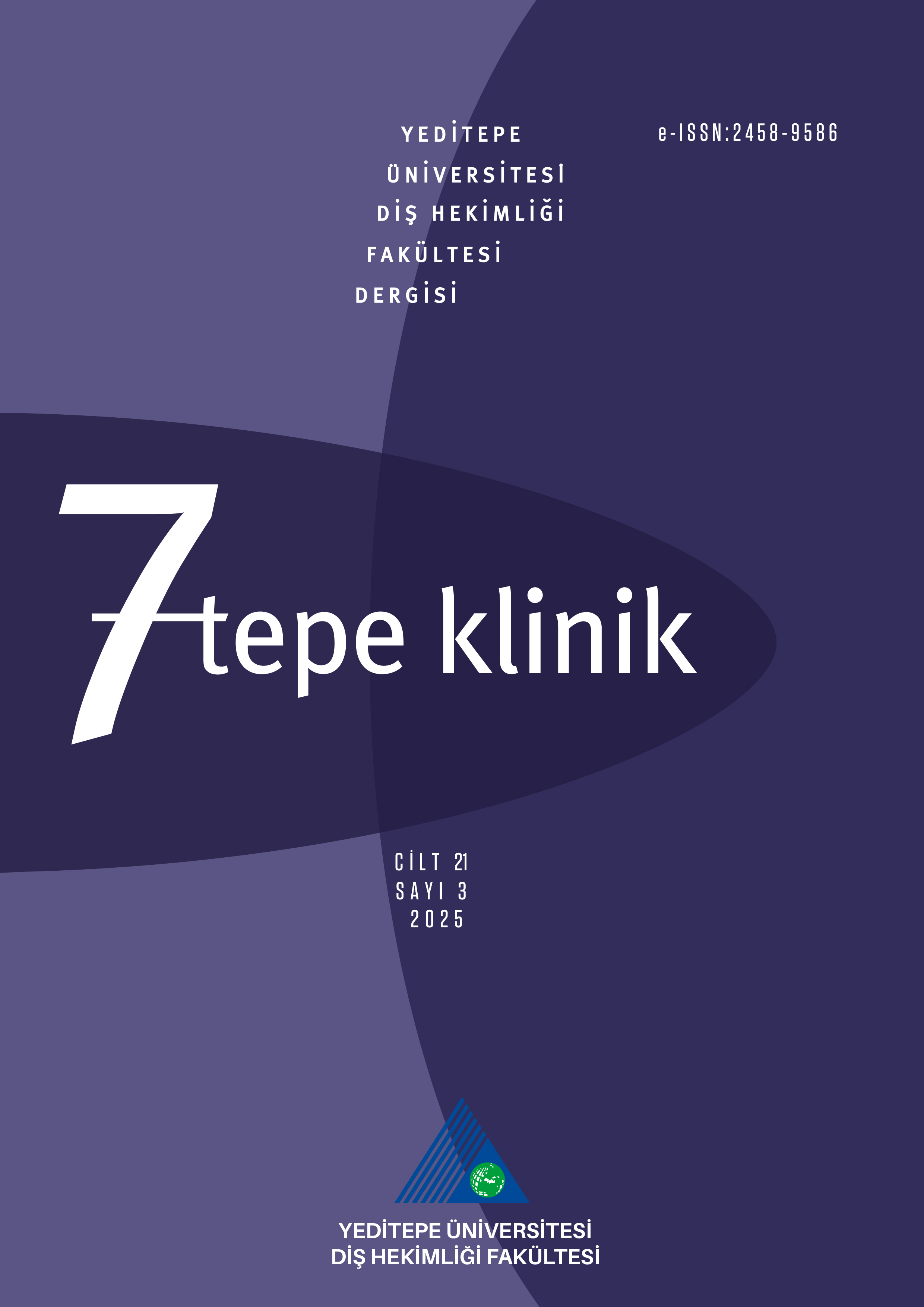Nano-Seramik Rezin CAD/CAM Bloğun Renk Stabilitesine Beyazlatıcı Ağız Gargarasının Etkisi
Nazire Esra Özer1, Ece Irem Oğuz21Lokman Hekim Üniversitesi Diş Hekimliği Fakültesi Protetik Diş Tedavisi Anabilim Dalı, Ankara2Ankara Üniversitesi, Diş Hekimliği Fakültesi, Protetik Diş Tedavisi Anabilim Dalı, Ankara
GİRİŞ ve AMAÇ: Hastaların artan estetik talepleriyle birlikte restoratif materyallerin renk stabilitesi, uzun vadeli klinik başarının belirlenmesinde kritik öneme sahip olmaya başlamıştır. Bu çalışma, bir nano-seramik CAD/CAM restoratif materyalin uzun süreli renklendirici içeceğe maruz kalmasının ardından ağız gargarası uygulanmasının renk stabilitesi üzerindeki etkisini in vitro olarak değerlendirmektedir. Çalışmanın amacı, beyazlatıcı gargaranın kahve ile renk değişimi sonrası nano-seramik materyal üzerindeki renk değişimi etkilerini belirlemektir.
YÖNTEM ve GEREÇLER: Lava Ultimate rezin nano-seramik CAD/ CAM bloklardan elde edilen örnekler 4 gruba ayrıldı (n=11); Grup YT (yapay tükürük), Grup YT+G (yapay tükürük sonrası beyazlatıcı gargara uygulaması), Grup K (kahve), Grup K+G (kahve sonrası beyazlatıcı gargara uygulaması). Gruplardaki renk değişimi CIELAB sistemine göre spektrofotometre kullanılarak ölçüldü ve ΔE değerleri hesaplandı. Gruplar arasındaki farklılıklar tek yönlü varyans analizi ve Tukey testi ile analiz edildi (α = 0,05).
BULGULAR: Grup K ve Grup K+G den elde edilen ΔE değerleri Grup YT den istatistiksel olarak anlamlı yüksek bulundu (p<0.05). ΔE değerleri arasındaki farklar diğer gruplar için ikili karşılaştırmalarda istatistiksel olarak anlamlı değildi (p>0.05). Tüm gruplardan elde edilen ΔE değerleri 3.7 eşik değerin üstündeydi.
TARTIŞMA ve SONUÇ: Rezin nano-seramik CAD/CAM bloklardan elde edilen restorasyonlar üzerinde kahvenin renklendirici etkisi mevcuttur ve beyazlatıcı gargaranın bu renklenmeyi geri döndürme etkinliği tespit edilememiştir.
Anahtar Kelimeler: Rezin nano-seramik, renk stabilitesi, beyazlatıcı gargara.
The Effect of Whitening Mouthwash on the Colour Stability of Nano-Ceramic Resin CAD/CAM Block
Nazire Esra Özer1, Ece Irem Oğuz21Department of Prosthetic Dentistry, Lokman Hekim University, Faculty of Dentistry, Ankara, Türkiye2Department of Prosthetic Dentistry, Ankara University, Faculty of Dentistry, Ankara, Türkiye
INTRODUCTION: With the increasing aesthetic demands of patients, the colour stability of restorative materials has become critical in determining long-term clinical success. This study evaluates the effect of mouthwash application on the colour stability of a nano-ceramic CAD/CAM restorative material after exposure to long-term colouring beverage in vitro. The aim of the study was to determine the colour stability effects of bleaching mouthwash on the nano-ceramic material after discolouration with coffee.
METHODS: Samples obtained from Lava Ultimate resin nano-ceramic CAD/CAM blocks were divided into 4 groups (n=11); Group YT (artificial saliva), Group YT+G (whitening mouthwash after artificial saliva), Group K (coffee), Group K+G (whitening mouthwash after coffee). The colour change in the groups was measured using a spectrophotometer according to the CIELAB system and ΔE values were calculated. Differences between the groups were analysed by one-way analysis of variance and Tukey test (α = 0.05).
RESULTS: The ΔE values of Group K and Group K+G were statistically significantly higher than Group YT (p<0.05). The differences between ΔE values were not statistically significant in pairwise comparisons for other groups (p>0.05). The ΔE values from all groups were above the threshold value of 3.7.
DISCUSSION AND CONCLUSION: Coffee has a colouring effect on the restorations obtained from resin nanoceramic CAD/CAM blocks and the bleaching effect of whitening mouthwash was not detected.
Keywords: Resin nano-ceramic, colour stability, whitening mouthwash.
Makale Dili: Türkçe



